Karen Bradley MP visits Slavery exhibition
Posted Tuesday, 6th May 2014
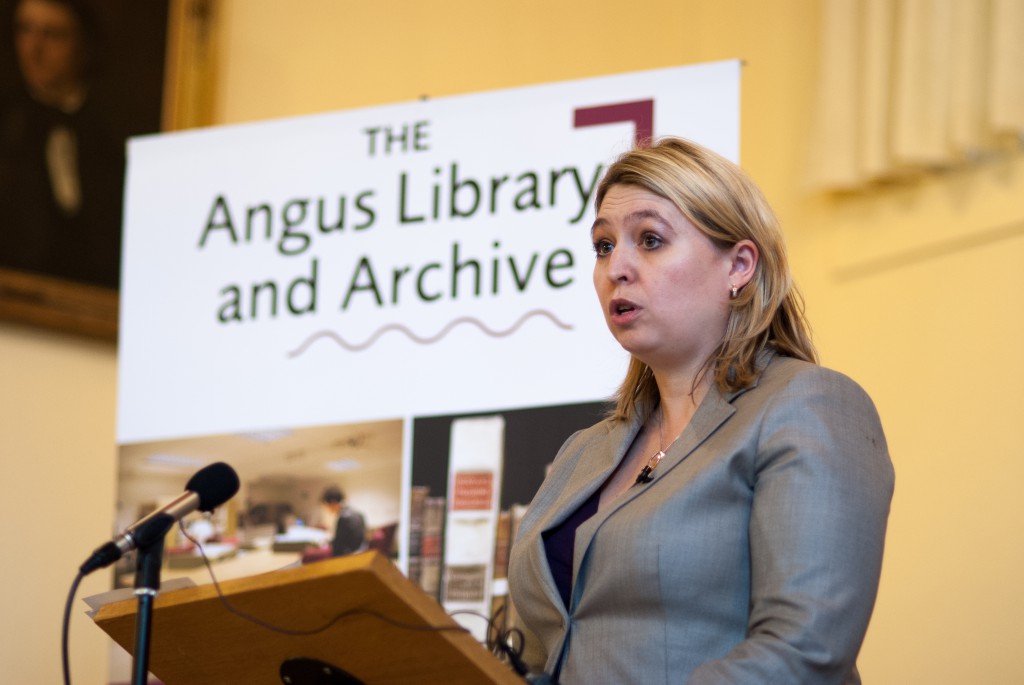
On Thursday 1st May, Karen Bradley, Minister for Modern Slavery and Organised Crime, spoke at Regent’s Park College about the challenges faced when tackling modern slavery.
The Minister viewed The Angus Library and Archive exhibition on Slavery: The Historical and Modern Perspective. She noted that the exhibition is a fascinating reminder of the historical fight against slavery, stating ‘the more we can raise awareness of the fact this evil crime still exists in 21st century Britain, the more chance we have of being able to consign it to the history books where it belongs.’
Further information from the Home Office can be found here
Click here to read a full transcript of Karen Bradley’s speech.
Photograph by Lucas McLaughlin Categories: Events Exhibitions
Reflections on Stethoscopes and Petticoats
Posted Thursday, 10th April 2014
We were pleased to welcome over 200 visitors to our exhibition: Stethoscopes and Petticoats: The Changing Roles of Non-Conformist Women, with 50 people attending the free talks on The Life and Hymns of Anne Steele and The Life of Dr Ellen Farrer.
The exhibition examined the role of women within the history of the British non-conformist movement, which has traditionally been subsumed under the history of men. The exhibition highlighted the significant contribution non-conformist women made to literature, social and political activism, mission work, and medicine, paving the way for future generations of pioneer women.
We’re very happy to report that evidence of strong, intelligent and progressive non-conformist women is not difficult to find in The Angus. The biggest challenge we had to overcome was narrowing down the exhibition content to just a small selection of 27 key objects. The circumstances of discovering two items for the exhibition were so fortuitous that we began to wonder if the archive itself was trying to tell us something. The first item had been sitting under our noses for several months, having been put out on display contained in a scrapbook in our exhibition on Slavery. The scrapbook contains a selection of abolitionist literature, including a small selection of pamphlets. A visitor conducting research on anti-slavery groups in Birmingham happened upon a pamphlet titled, ‘Reasons for Substituting East India, for West India Sugar’ (1826). Although we had seen the pamphlet in the scrapbook, it was our knowledgeable visitor who directed us to the author of the piece: Elizabeth Heyrick, a Quaker and one of the first activists to call for the immediate abolition of slavery.
The second item which came to be in the exhibition through fortuitous circumstances is a first edition of Mary Wollstonecraft’s A Vindication of the Rights of Woman: with Strictures on Political and Moral Subjects. One of our cataloguers working through the backlog of uncatalogued books within the archive, Lucy Kelsall, happened across the seminal text by chance. Such a discovery, just two weeks before the exhibition was due to open was both exciting and challenging as we knew we would have to work the book into the display without disrupting the rest of our arrangement. Fortunately, it made sense to make a text considered to be one of the earliest works of feminist philosophy item number one in the exhibition!
By Katie Pearce, Learning and Participation Officer
Stethoscopes and Petticoats was Co-Curated by Amanda Sharp and Sukie Trowles, Exhibition Research and Curation of Dr E. Farrer material by Blanca Verdia, Exhibition Research by Flavia Catena. Categories: Events ExhibitionsArchive Taster Sessions: The Story So Far…
Posted Monday, 7th April 2014
Underneath Pusey St, Oxford, a number of exciting stories lurk in the rolling stacks of The Angus Library and Archive. Through developing Archive Taster Sessions, we aim to set loose some of these stories by offering inquisitive students challenging and intriguing activities framed around historical individuals. The focus is on giving students the opportunity to handle real historical items, such as original correspondence, diaries and photographs, and use these to develop their enquiry skills.
The sessions we have been piloting focus on two key figures from our collection:
Students investigate the challenges Dr Ellen Farrer faced as a woman doctor and the first Baptist Medical Missionary to travel to India in 1891. Items include nineteenth-century medical certificates, diaries and a solid gold medal!
Students examine Knibb’s involvement in the campaign against slavery and Jamaica’s largest slave rebellion, looking at Knibb’s achievements within the broader context of the abolition movement and Britain’s involvement with the slave trade. Items include early nineteenth-century correspondence, pamphlets, and newspaper articles.
Widening Access
As part of widening access to The Angus, we have been piloting our Archive Taster Sessions through fostering a partnership with IntoUniversity, a charity which ‘supports young people from disadvantaged backgrounds to attain either a university place or another chosen aspiration.’ This partnership is helping us to reach our target audience of Year 10/11 students who have not yet had experience of working in an archive setting.
Our location within an Oxford college also fulfils some of IntoUniversity’s objectives; as part of the day, we arrange to include some encouraging experiences of ‘university life’. Some willing Regent’s Park College students volunteer to assist with the activities, and answer the participants’ questions about attaining a place at university and what to expect from university life.
Overcoming Challenges and Expectations
The crucial point of an Archive Taster Session is to let students handle original material from the library and archive. The very process of coming into contact with original items inspires the students and so we have to think carefully about both letting the students enjoy this experience and preventing any original material getting accidentally damaged. We overcame any concerns by giving students and visiting staff a 15 minute ‘object handling’ lesson prior to using the archive, all photographs and letters were placed in melinex sheets to protect them and volunteers and staff kept a close eye on the use of the more fragile source materials.
We wanted all the students attending to feel involved and get the most out of using the archive. Students were encouraged to ask questions and supported by volunteers throughout the day. Students were asked to work in pairs to discuss their ideas and feedback to the group. Objects were selected for the accessibility, which meant that every student could find something to say about what they were examining. We also provided transcripts for any letters which were difficult to decipher, but only after students had tried to read them thus demonstrating one of the real challenges faced when using an archive.
At the end of the day, students were given time to ask more questions about The Angus. We also brought out our oldest bound item, the Nuremberg Chronicle, as an exciting item to finish with. Students were encouraged to carefully turn a page in the Nuremberg Chronicle, and were told about older binding methods and the use of woodcut illustrations. This fed into a discussion about the ‘treasures’ of The Angus and left students with the impression that they only saw a small sample of what is held in the library and archive, encouraging them to think about exploring archives further to find more ‘hidden gems’.
Feedback so far…
‘Having access to the archives and university experts was a privilege and it is days like these that really stand out in the memory of the students we work with.’ – IntoUniversity Education Worker
‘Students learnt the appropriate manner in which to handle fragile books that are hundreds of years old […] Students gained an understanding and appreciation of the fact that history is a record of real people not just stories in books.’ – IntoUniversity Education Worker
‘Brilliant to watch minds expand.’ – Teacher
‘This shows me what the students can really do. [student] is normally very quiet in class, but they got involved today.’ – History Teacher
‘Fun, educational, and a new experience.’ – GCSE Student
‘I learnt how to analyse first-hand sources, to […] tell a life of someone I have never learnt about [before].’ – AS Level Student
‘I’m touching history!’ – GCSE student
By Katie Pearce, Learning and Participation Officer
If you would like your students to visit The Angus and experience ‘touching history’, please do get in touch:
Categories: Events Opportunities ResourcesIn honour of World Poetry Day – Sacred Songs and Solos
Posted Friday, 21st March 2014
Sacred Songs and Solos was a revolution in hymnody when it first appeared. It was one of the first hymnbooks to transcend the confines of the standard metrical tunes which could be fitted to most hymns to some extent. Metrical hymn singing was not always without embarrassment: an elderly friend once recounted the occasion when the musical line breaks caused her congregation to implore heaven to ‘stir up our stew’ (Stir up this stupid heart to pray).
Ira Sankey was a Methodist hymn writer and gospel singer who was closely associated with the massive evangelistic crusades of the Congregationalist Dwight L. Moody. Although the pair were from the USA, they were particularly popular in Great Britian, where they preached and sang in front of crowds of thousands. They were early ecumenists, and crossed denominational divides, while remaining firmly in Evangelical camp. Their work was particularly supported by the Baptist Charles Spurgeon from his Metropolitan Tabernacle in South East London. Sankey’s lively music was a massive hit, and he released Sacred Songs and Solos in 1873, which is often referred to as Sankey and Moody, although only one hymn had lyrics written by Ira Sankey, and not a single one was composed by Dwight Moody.
However, many of the tunes were arranged by Sankey in a modern ‘pop’ style. It has been noted that Sankey’s style of arrangement owed a great deal to black Gospel music, music hall tunes, Bluegrass and even early forms of jazz. This can be seen in the very syncopated rhythm in this arrangement of Sweet By-and-By.

Angus K.14
However, this influence was gradually ironed out by European churches, and by the 21st century, while Sankey’s cheerful melodies are still used, the rhythm has degraded almost beyond recognition.

http://www.hymnary.org/media/fetch/146887 (Accessed 21/03/2014)
Many of the hymns are still in use in many churches today, and the style of the meetings continues to influence preachers and musicians. However, others have not withstood the test of time so well. A notable casualty is O Where is my Wandr’ing Boy Tonight?
Where is my wandering boy tonight
The boy of my tenderest care
The boy that was once my joy and light
The child of my love and prayer
Where is my boy tonight
Where is my boy tonight
My heart o’erflows for I love him he knows
Oh where is my boy tonight
Once he was pure as morning dew
As he knelt at his mother’s knee
No face was so bright no heart more true
And none was so sweet as he
Oh chould I see you now my boy
As fair as in olden time
When prattle and smile made home a joy
And life was a merry chime
Go for my wand’ring boy tonight
Go search for him where you will
But bring him to me with all his blight
And tell him I love him still
Categories: Cataloguing
Eccentric Preachers
Posted Monday, 3rd March 2014
Charles Spurgeon (1834-1892), the charismatic and prolific Baptist author, first published this petite volume in 1879. The Angus holds the 1888 edition, published as part of “Spurgeon’s Shilling Series” and only 12.5cm high.
Spurgeon does not see the charge of eccentricity as necessarily a negative one:
Now I am free to admit that the word has come to mean singular, odd, whimsical, and so forth; but by going a little deeper into its etymology, we discover that it simply means that the circle in which an eccentric man moves is not quite coincident with that which is followed by the majority: he does not tread the regular ring, but deviates more or less as he sees fit.
Indeed, Spurgeon has been regarded as an eccentric himself: he recounts, as one instance, a letter received from a Dutch minister, who had been shocked to the core to hear him preach. But what had Spurgeon done that was so distressing?
He said that I wore a moustache like a carnal, worldly-minded man!
Charles Spurgeon and his moustacheSpurgeon puts forward a passionate defence of a number of pastors whom he considers to have been unfairly charged with eccentricity, and in the process tells a number of curious tales.
On keeping off the rain:
Time was when it was accounted one of the outrageous deeds of a certain Jack Hanway, that he actually walked down a street in London on a rainy day, carrying a new-fangled kind of round tent to keep off the wet; yet no one quotes this action now as a proof of extreme eccentricity, for umbrellas are as common as mushrooms.
On backsliding:[1]
A man once went to Vincennes, in the United States, to hear Lorenzo Dow preach on backsliding. He said, ‘An immense concourse of people assembled in the woods, and waited for Dow’s arrival. Finally he made his appearance, and at the time all expected the sermon he arose, climbed up a smooth sapling, and cried out, ‘Hold on there, Dow; hold on.’ He soon slid down to the ground, and put on his hat and left. That was all the sermon we heard that day.
On William Dawson:
Dawson was once preaching about Noah’s ark, and finding himself boxed up in the pulpit he said, “This won’t do.” He opened the pulpit door and he came down the stairs to the bottom of the pulpit, and there he began to fell trees and cut and saw them, and then he seemed to be hammering away to make the ark, which was represented by the pulpit.
If God gave him the histrionic faculty, why should he not use it to impress his hearers?
And finally, advice for us all on British manners and speaking one’s mind:
A gentleman not long ago was set down as very eccentric because being asked whether the tea was to his taste, he replied that it was not, for it was very weak and nearly cold. Others had equivocated, or had expressed themselves delighted with the nauseous decoction, and none of these were set down as eccentric. The more’s the pity!
However, a word of warning from Spurgeon regarding newspaper (or, perhaps, blog) articles: “[they] make selections of all the remarkable anecdotes, or odd sayings, used by a speaker, and when these are separated from their surroundings the result is anything but satisfactory.”
So for those who desire full satisfaction, the text is located in the Angus collection, shelfmark 1/2/218.
By Lucy Kelsall, Cataloguer
[1] Spurgeon quotes from William Taylor, The Model Preacher.
An Introduction to Dr Ellen Farrer (1865 – 1959) by Blanca Verdia
Posted Wednesday, 19th February 2014
The Angus Library and Archive holds Dr Ellen Farrer’s diaries, letters, degree certificates and photographs, some of which will be shown in our next exhibition:
Stethoscopes and Petticoats: The Changing Roles of Non-Conformist Women
Hilary Ingram will be giving a talk on The Life of Dr Ellen Farrer on Wednesday 19th March at 5.30pm, Regent’s Park College, Oxford. Booking is essential.
Ellen studied at the London School of Medicine for Women and the University of London, becoming one of the first women in Britain to qualify as a doctor. During the 19th century, a career in medicine was not an easy path for a woman to follow. Gaining practical medical experience after graduation was extremely difficult, since hardly any resident hospital posts were open to women, leaving no other option but to obtain experience by attending clinics at hospitals for children, eye and dentists departments or medical missions.
Ellen Farrer eventually obtained the post of Resident Medical Officer at New Hospital for Women in Euston Road. The hospital had been founded in the 1870s to enable poor women to obtain medical help from qualified female practitioners, a very unusual thing at that time. Nevertheless, travelling overseas seemed the best way to carry on with her medical work. In February 1891, she decided to apply to work as a missionary doctor with the Baptist Zenana Mission in India. Her application was successful and she sailed to India, arriving in November 1891.
Ellen started working at Bhiwani, a small town near Delhi, taking over a small dispensary run in an Indian house. Medical aid among the Bhiwani women was essential, as they were discouraged from attending the Government Dispensary and Hospital, where the doctor was male. Initially, Ellen found that patients were reluctant to stay at the dispensary for treatment and some were suspicious of her ‘new’ way of practicing medicine. In her diaries and letters, Ellen Farrer explains how the success in her first surgery was vital in gaining the confidence of the people. She also writes about problems with unsanitary conditions, a lack of light and unreliable water supply. Early operations were performed in the open air in order to have enough natural light (with a patient’s friends and family observing from the rooftops!). Despite these difficulties, soon a 24-bed hospital was established.
The 24-bed hospital was sometimes called up to treat over 40 patients. In 1923, a new, bigger and better hospital with 50 beds was opened and named ‘The Ellen Farrer Hospital’. She remained working there for ten more years, until her retirement in 1933. Her efforts were recognised twice by the Indian Government which bestowed on her the Kaiser-i-Hind Silver Medal and later the Gold Medal of the same order (1928).
Blanca Verdia, Exhibition Research Volunteer
Categories: Exhibitions
Exhibition booking open!
Posted Tuesday, 11th February 2014
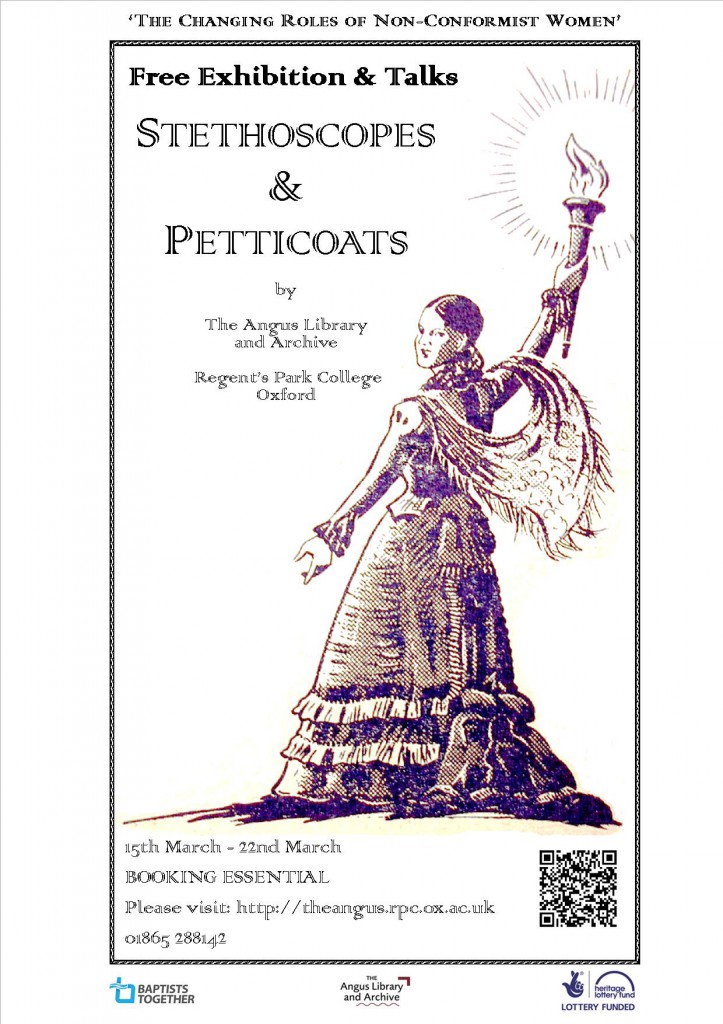
Stethoscopes and Petticoats: The Changing Roles of Non-Conformist Women
Categories: ExhibitionsOld-fashioned modernisation: the 19th century binding of Athanasii Magni Alexandrini episcopi, graviss. scriptoris, et sanctiss. martyris, Opera (Basle: 1568)
Posted Tuesday, 4th February 2014
Many of the books being catalogued as part of the HLF funded project are from Regent’s Park College’s library in its original location at Stepney Green, where the Baptist Academical Institution (as it was known in its first couple of years) was housed from 1810-1856. As the books acquired at this time were intended to form a working library for the students, many books in old bindings were either rebound, or repaired using up to date materials, as was the case in most libraries at this time. Sadly, these ‘improvements’ to the books proved short-sighted, as many Victorian mass-produced materials used have stood the test of time less well than the older hand-crafted supplies which were replaced.
While cataloguing a 16th century edition of The Works of Athanasius, my initial impression was that the rotting leather spine, flimsy machine made endpapers and cheap marbled paper covers meant that the book had been completely rebound at about the time of its arrival in Stepney. As information on the title page tells us that the book had a rich history having belonged variously to Jesus College Cambridge in 1700, and to famous abolitionist Granville Sharp in the later years of the 18th century, this loss of material evidence was a source of regret. However, on closer inspection, printed text of a similar age and style to that in the 16th century book was visible through the 19th century paper on the inside of the front cover.
It remained common for binders to use waste paper in the parts of their work that their clients couldn’t see until very recently, but why would a 19th century craftsman have 250 year old waste paper? He didn’t. Turning back to the outside of the front cover of the book, the poor quality Victorian leather had peeled away near the spine edge, to reveal a much earlier binding underneath, probably dating from the late 16th or early 17th century. Rather than using new materials, the binder seems to have merely ‘upcycled’ the existing covers. Whoever paid for the rebinding could reasonably be annoyed with this deception. However, for book historians in the 21st century, this cutting of corners is good news, as it means that some details of the book’s life and travels (Q. How wealthy was the book’s first owner? A. Middling. Q. Were they English or Swiss? A. English) have inadvertently been retained through an anonymous workman’s cost cutting schemes.

- Victorian leather has peeled away near the spine edge, to reveal a much earlier binding underneath, probably dating from the late 16th or early 17th century.
1/2/418; binding; conservation; Athanasius
Categories: Cataloguing NewsDoctor Doctor: The Works of Galen (Basle 1542)
Posted Wednesday, 18th December 2013
This copy of Galen has had a hard life, but a useful one. The 2nd century Greek physician is now often mentioned only with respect to his errors (which are glaring, including continuing the theory of humour imbalance and believing that being female was a sort of birth defect), but when his work was reintroduced to European doctors in the 11th century, it was far in advance of any medical knowledge available for the previous five hundred years. His writings continued to be the apex of medical research until the 16th century, and were still widely used as a medical text books into the mid-19th century.
This Latin edition, printed in Basle in 1542, belonged to at least three English doctors during the 17 and 1800s : John Johnson, William White, and William Balfour Baikie. As yet, nothing is known of John Johnson beyond that he was a doctor in York. William White (1744-1790 : another Yorkshire doctor) wrote An essay on the diseases of the bile… (London : Bell, 1771), and presumably used this very book in his research. A tiny handful of copies of his treatise remain in a few specialist libraries of medical history.
The final known medical owner was a naval surgeon of the Victorian era, who gained fame (and an entry in the Oxford Dictionary of National Biography) for his work as an explorer, topographer, geologist, and linguist of the Niger region, and of his own native Scottish islands. While many African explorers’ writings are notable for their relation of thrilling exploits against exotic locations, Baikie’s works are serious scholarly tomes of in depth research. This intelligent man’s most lasting legacy, however, was his pioneering use of quinine during his first Niger exploration in 1854. Before this, most expeditionary crews had lost a large number of members to malaria, and early European colonies in West Africa had been wiped out by the illness. However, thanks to Baikie, his group remained malaria-free, and quinine’s use was rapidly adopted by all Europeans in Africa. Now that the British army could fight off malaria, they could easily overturn West African power structures, and the fate of two continents was sealed for the next century.
Baikie’s other equally lasting African legacy was linguistic. To this day, the Nigerian Igbo people still use the word ‘Bekee’ (a mild corruption of the explorer’s name) to refer to a white man.
1/2/192
by Anna James, Antiquarian Cataloguer
Categories: News


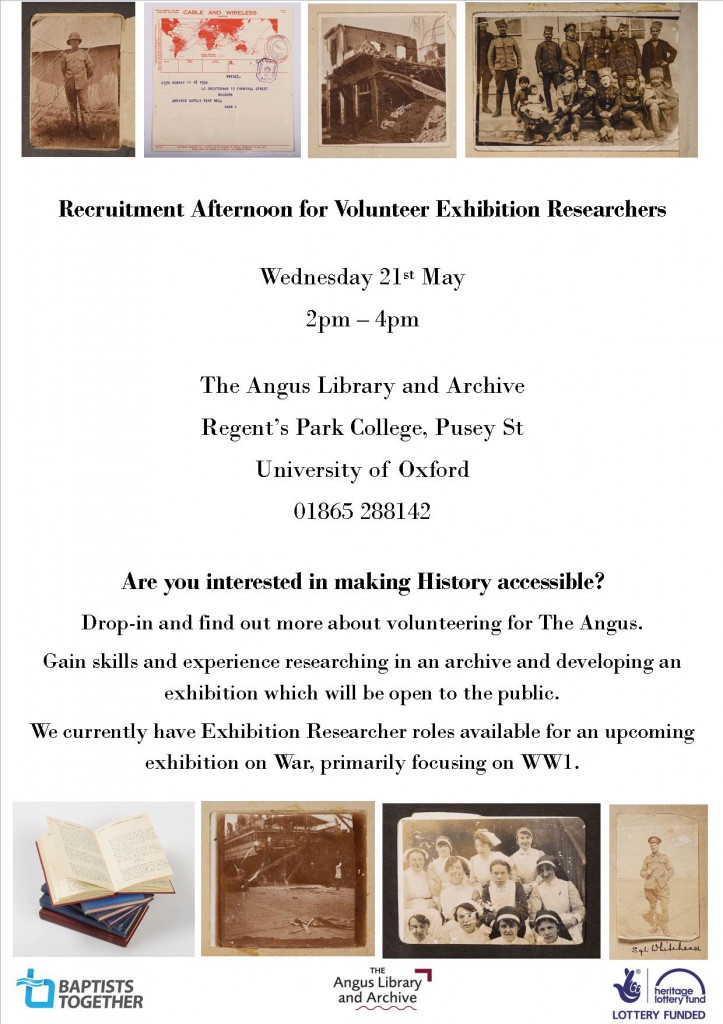
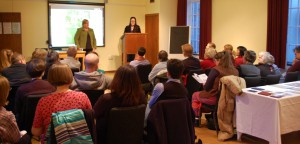
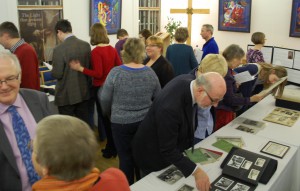
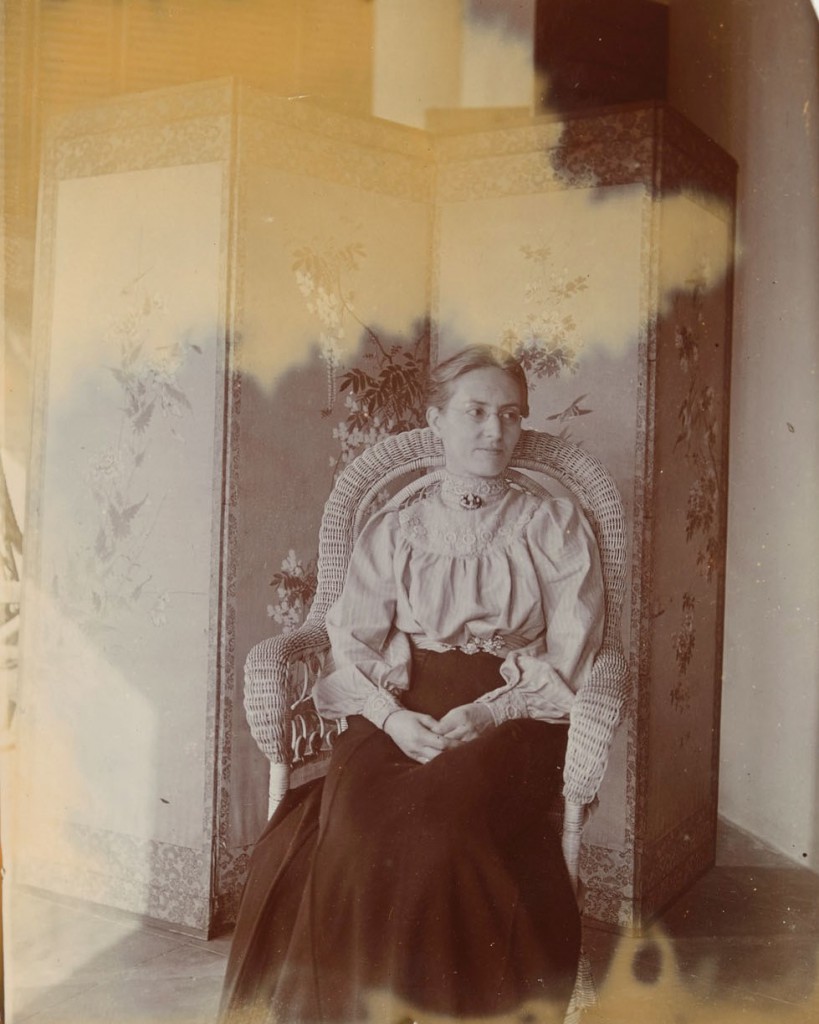
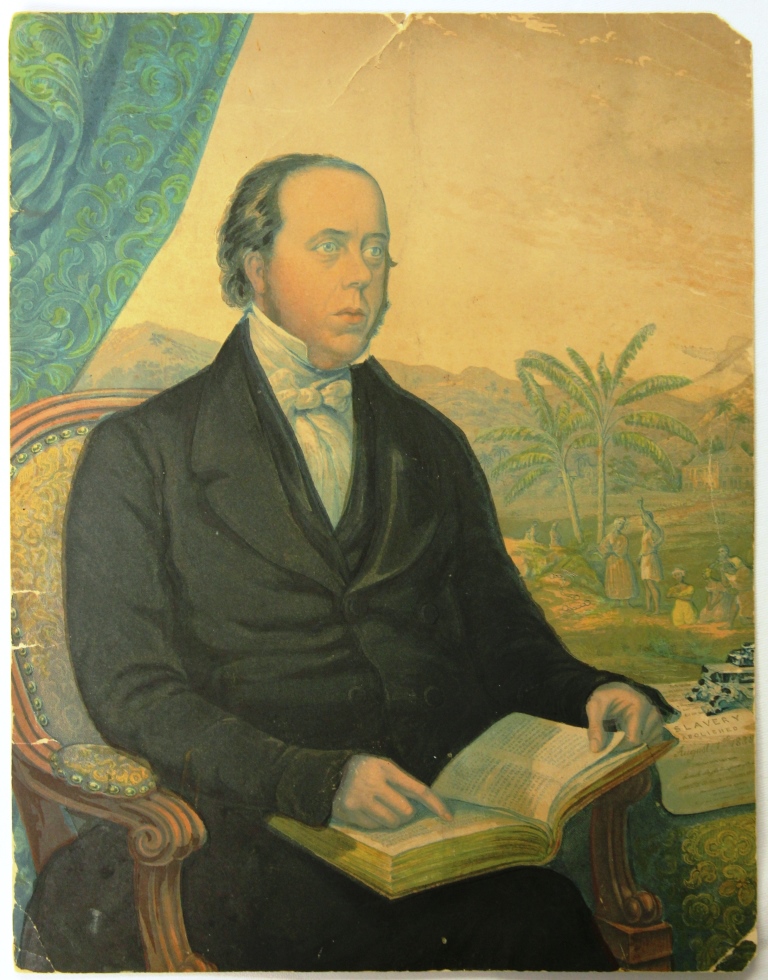
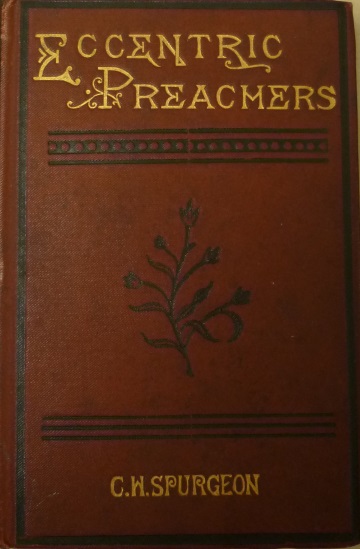
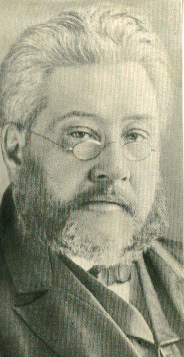
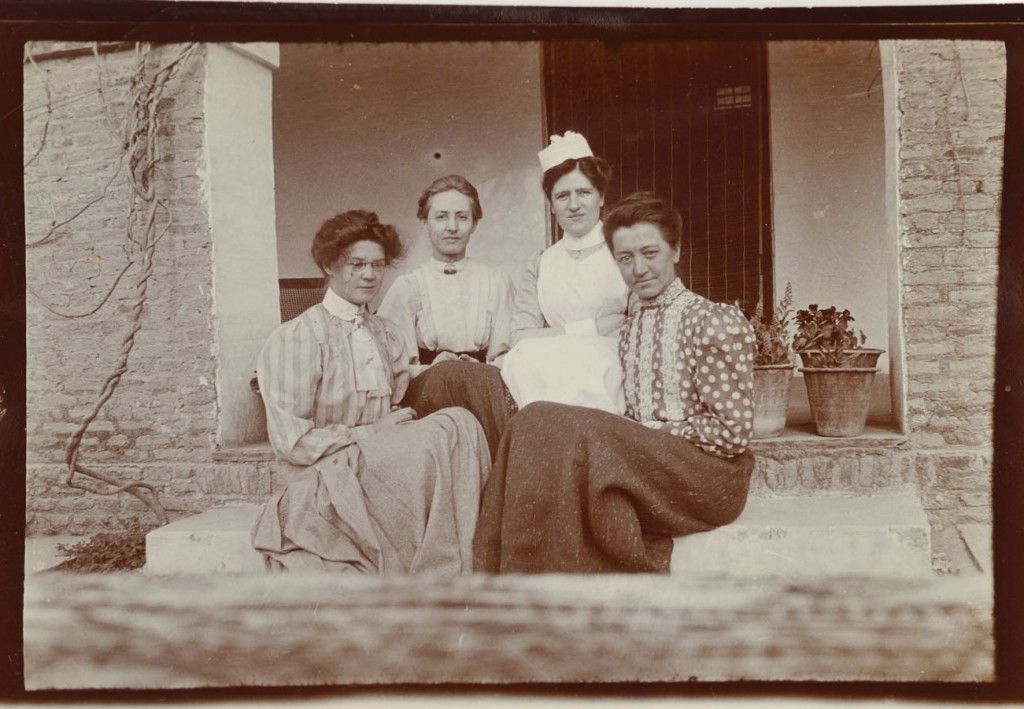
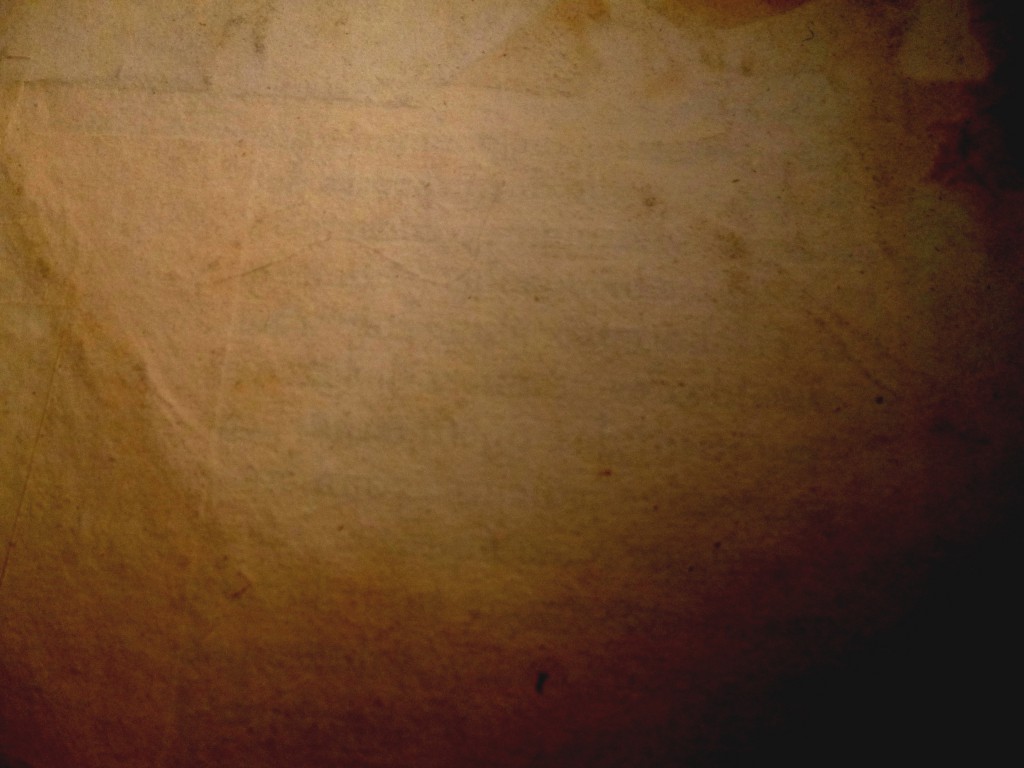
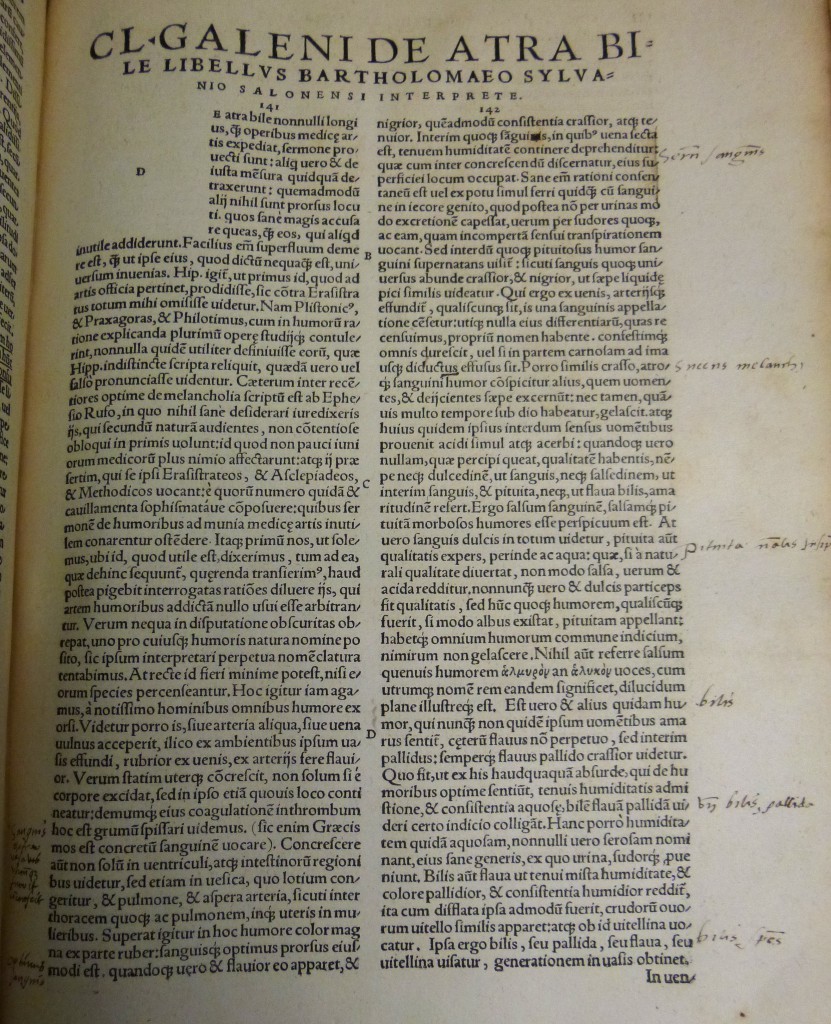
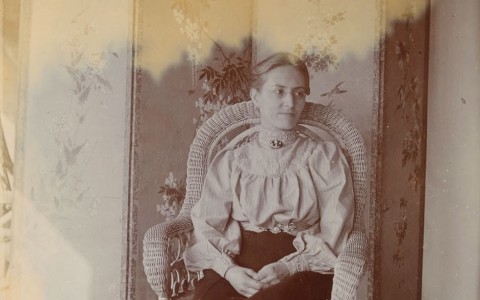
Recent Comments